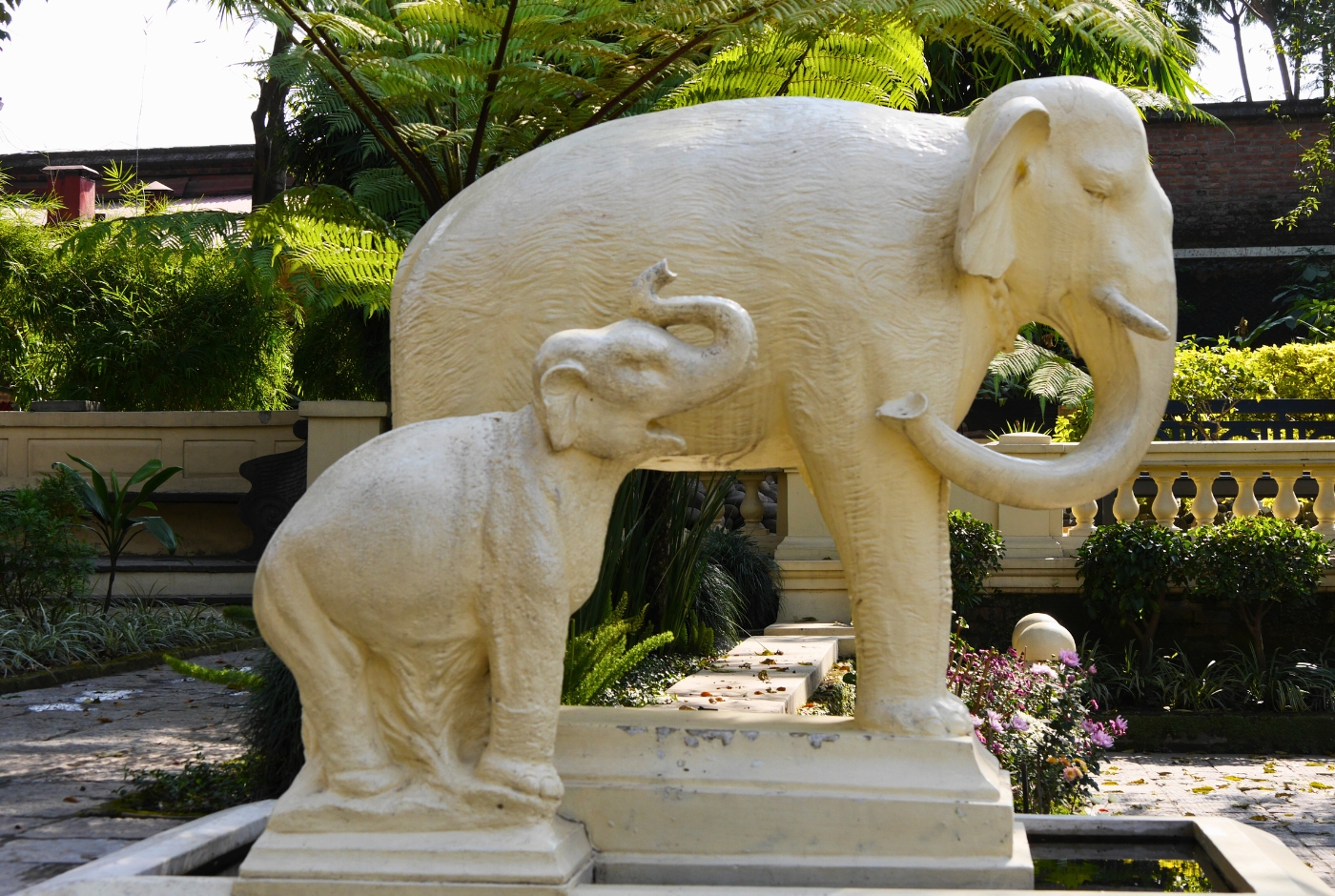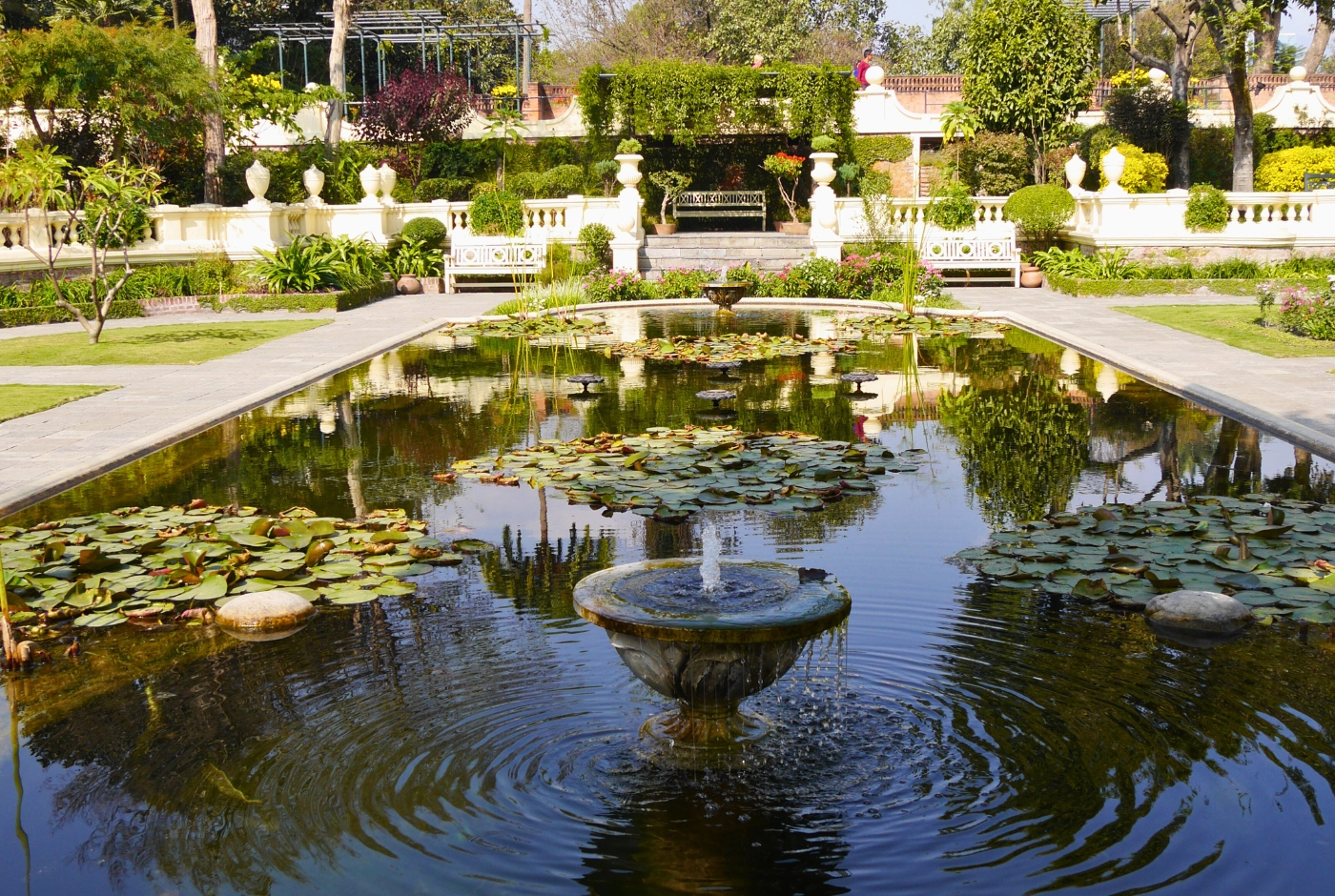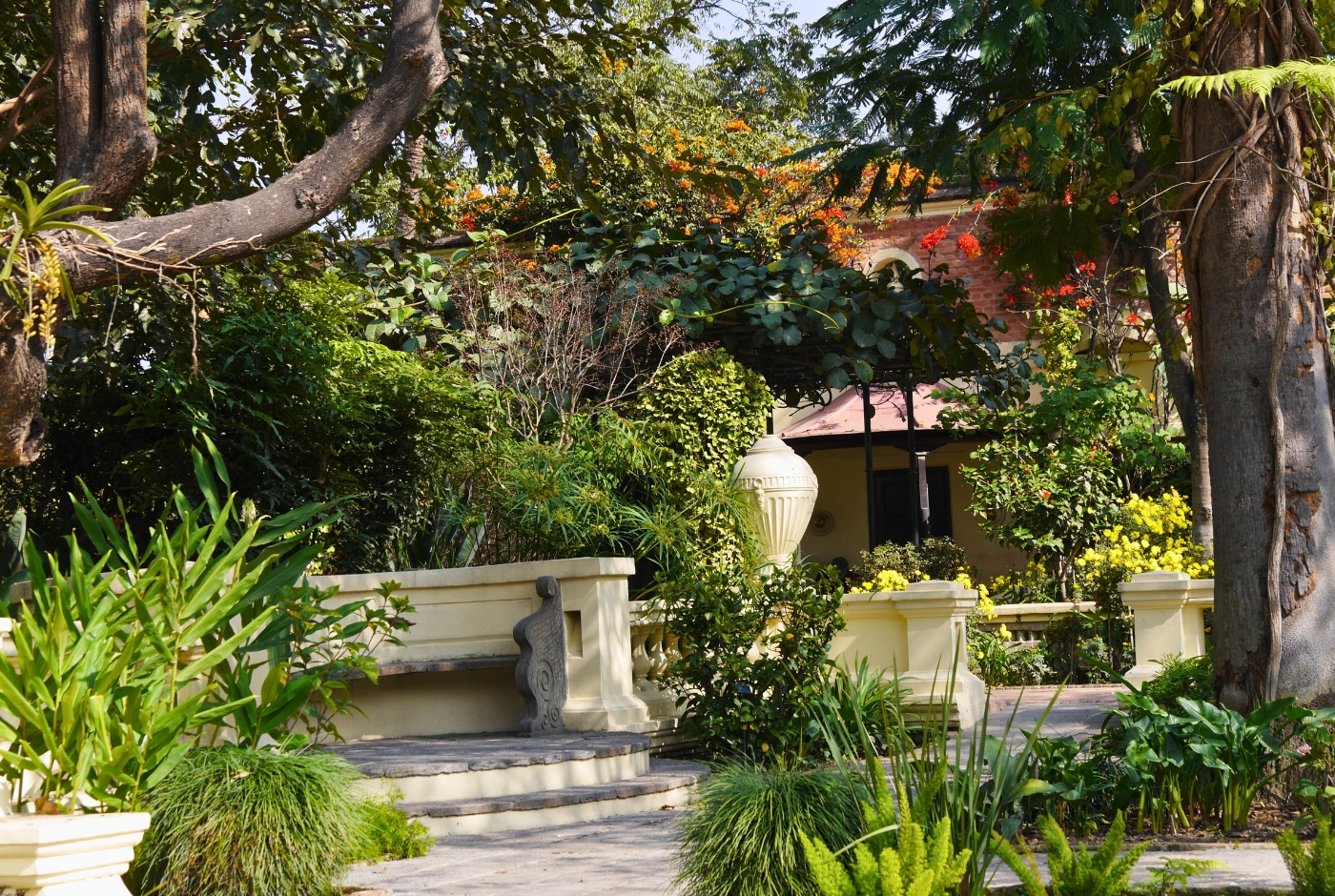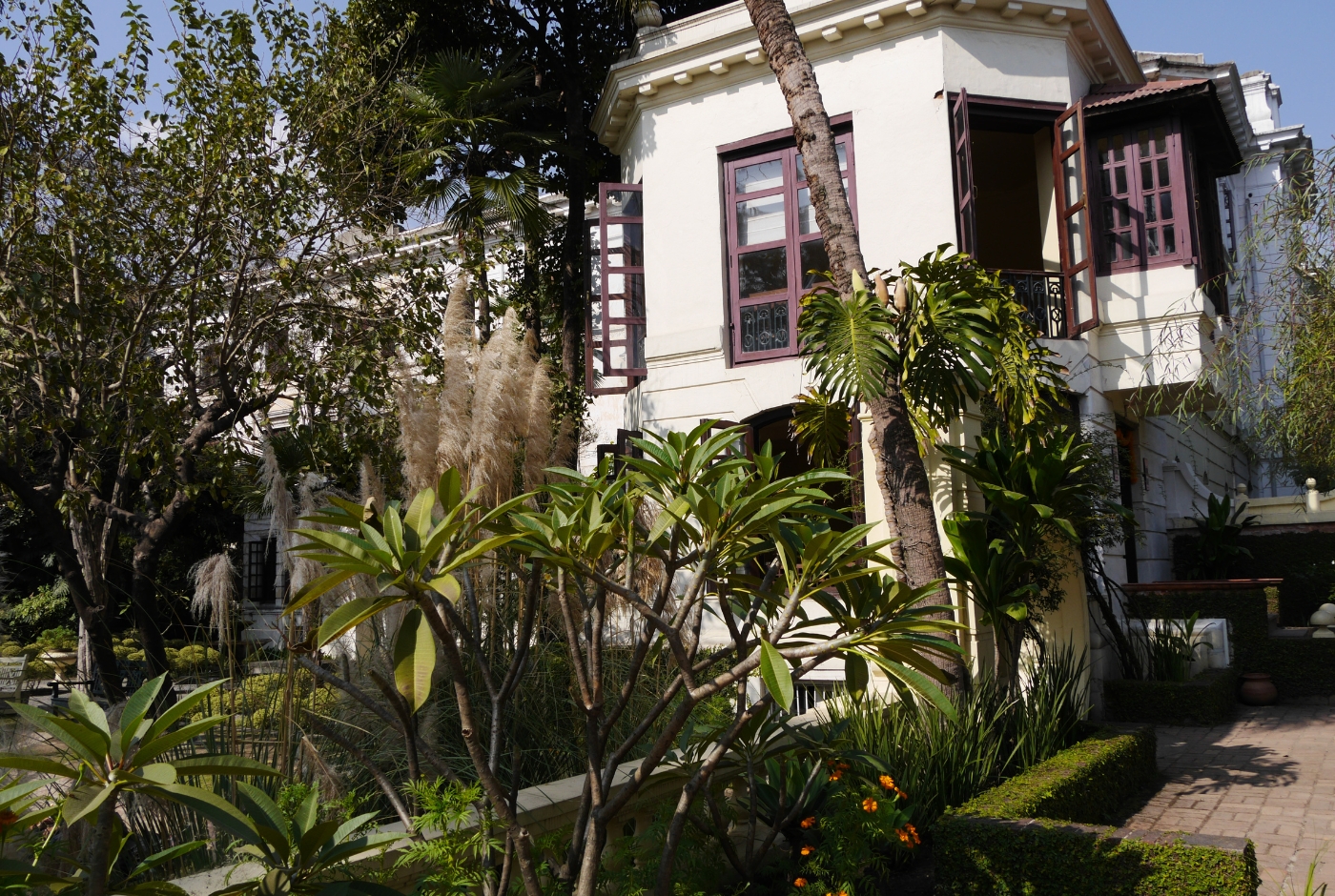The Garden of Dreams is a historical garden with a neo-classical design that can be seen in the middle of Kathmandu city in Nepal. Paved perimeter walkways, pavilions, terracing, and diverse planting sections are interspersed throughout the garden, which is encircled by a beautiful sunken garden that features a big pond in the middle. The architecture of the garden is equivalent to roughly that of the formal gardens found in Europe. The design of the Garden's landscape invites people to wander around and see its beauty from different points of view.
Every day, even on Saturday, from 9:00 am until 9:00 pm, the public is welcome to visit the Garden of Dreams. Throughout the year, the Garden of Dreams is open.
Why visit the Garden of Dreams in Kathmandu, Nepal?

Little History of Garden of Dreams
The Garden of Six Seasons, which was designed in early 1920 by Marshal Kaiser Sumsher Rana (1892–1964) and is located in Kaiser Mahal, which is right across the road from the former Royal Palace and at the entry to the Thamel tourist area, is what brought the Garden its fame. The Kaiser Mahal is located at the entrance to the Thamel tourist area. The garden was thought to be one of the most elegant private gardens at the time because it was designed in the Edwardian style. The Garden of Dreams was designed and built under the direction of civil engineer Kishore Narshingh, who also worked as Maharaja's architect and created the Singha Durbar.
There are patios, terraces, wooden beams, vases, and birdhouses, all with a European feel, inside the garden's walls. There are also pavilions, fountains, and decorative garden furniture. The garden's six pavilions, which serve as its structural backbone, are each named after one of Nepal's six distinct seasons. After Kaiser Sumsher died, the garden was given to the government of Nepal, but it wasn't taken care of well for many years. Today, there is only one half of the garden's original layout left.
Due to decades of neglect that resulted in crumbling pavilions, overgrown paths, and the loss of subtropical flora, restorations were carried out between the years 2000 and 2007 with the assistance of the Austrian Development Aid (the Austrian Government). These restorations were done in partnership with the Nepal Ministry of Education. Eco Himal's implementation of it. The project to fix up the building has become a model for how to keep historic sites in good shape. The garden's layout and literary references connect it to Kaiser Shumsher's library's holdings of books on literature, architecture, and gardening. After the restoration was finished, modern amenities were added to the garden so that it could be enjoyed by visitors in the present day. It has been renovated to the point where it now serves as a safe haven of calm and serenity amidst the hustle and bustle of Kathmandu's city center, and it is still a popular destination for tourists.
Garden of Dreams Photos

Garden of Dreams – Meaning and Experience
The Garden of Dreams, also known as the Garden of Six Seasons, is more than just a historical garden in Kathmandu—it’s a space where architecture, nature, and symbolism come together to offer a peaceful retreat in the heart of the city.
Originally built in 1920 by Kaiser Shumsher Jung Bahadur Rana, the garden was inspired by Edwardian-era English design, with a distinctly Nepali twist. It featured six pavilions, each representing one of Nepal’s six traditional seasons. Though only three pavilions remain today, the overall layout continues to reflect the original vision: a calm, reflective space designed for beauty, relaxation, and cultural expression.
Surrounded by manicured lawns, lotus ponds, pergolas, fountains, and neoclassical elements, the garden offers a unique setting rarely found in bustling Kathmandu. It’s not just a sightseeing spot—it’s a place to pause. A quiet haven where visitors can read, reflect, or simply enjoy the moment.
The Kaiser Café, located inside the garden, adds to the experience by serving both Nepalese and Continental cuisine, making it a popular venue for lunches, meetings, and special events. Entry tickets are available at the gate, and the space is open to all who seek a brief escape from the city’s pace.
On a deeper level, the term “Garden of Dreams” evokes more than its physical form. It can be seen as a metaphor—a symbol of the inner world where hopes, creativity, and the subconscious mind find expression. A place not just to visit, but to feel. To reconnect with something quieter, more personal, and beautifully ordinary.
Garden of Dreams Location
The Garden of Dreams, also known as Swapna Bagaicha, is a beautifully restored neo-classical garden nestled in the heart of Kathmandu.
- Location: Tridevi Marg, within the historic Kaiser Mahal complex
- Nearby Landmark: Directly across the street from the former Royal Palace, at the entrance to the Thamel tourist area
- Walking Distance: Just a short walk from central Thamel
This serene enclave offers a rare pause from Kathmandu’s buzz — with pavilions, fountains, and tranquil ponds surrounded by well-kept greenery. A perfect stop before or after exploring Thamel.
How do I get to the Garden of Dreams?
The Garden of Dreams is on Tridevi Sadak (Road), which can be accessed from Thamel Marg or Kantipath. It is situated in close proximity to the extremely well-known Himalayan Java Cafe, which is just next door. It should just take you two minutes to get there from Thamel, but if you find yourself lost, ask someone for instructions.
Planning a visit to the Garden of Dreams? Here's exactly how to reach this peaceful spot from Mahankal, Budhanilkantha — whether you're taking public transport, a ride-hailing app, or walking the final stretch.
Where is Garden of Dreams?

Step-by-Step Directions
- Travel to Thamel
- Start by taking a bus or taxi from Mahankal to Thamel, the heart of Kathmandu’s tourist district.
- Ride-hailing apps like Pathao or inDrive are reliable and widely used.
- The journey takes about 25–35 minutes, depending on traffic.
- Walk to the Garden of Dreams
- Once you arrive in Thamel, you’re just a couple of minutes away from the Garden of Dreams.
- Head towards Tridevi Sadak (Tridevi Road).
You can access it from either Thamel Marg or Kantipath.
It’s right next to the Himalayan Java Café and across from the former Royal Palace.
Look for Key Landmarks
The garden sits within the Kaiser Mahal complex and is close to the SAARC Secretariat Office and Election Commission Nepal. It’s well-known, so spotting it is easy.
The entrance gate is large and clearly marked.
If You’re Unsure — Just Ask
- Lost in the maze of Thamel’s alleys? Ask a shopkeeper or passerby.
- Most locals are familiar with the Garden of Dreams and happy to help.
Quick Travel Tips
- Use Google Maps to track your route.
- If using ride apps, type “Garden of Dreams” as your destination — it’ll take you right to the entrance.
- Try to visit in the morning or late afternoon for a quieter, more relaxing experience.
Garden of Dreams Tickets, Kathmandu

Garden of Dreams Tickets Price: Entry Fees and Membership Details
The Garden of Dreams in Kathmandu offers a peaceful escape right at the edge of Thamel. Before you visit, it’s helpful to understand the ticket structure and available discounts, especially if you’re traveling with a group or planning repeat visits.
For general entry in the Garden of Dreams, the ticket price for Nepali citizens is NPR 150 per person, while non-Nepali visitors (foreigners) are charged NPR 400 ($4) per person. These rates grant access to the garden’s well-maintained paths, historical pavilions, and tranquil water features—an ideal spot for reading, reflection, or a quiet break from the city’s energy.
Corporate members of more than 10: Discounts are available and thoughtfully structured to encourage wider access. A 25% discount applies to group bookings of ten or more tickets, making it convenient for tour groups, families, or school visits.
Additionally, there is a daily 50% discount offered to children, senior citizens, and differently-abled individuals, allowing more people to enjoy the space affordably.
Note: Tickets for the Garden of Dreams in Kathmandu can be purchased at the entrance, as there is no online ticketing system currently available.
Annual Membership Fees for Garden of Dreams
- Nepalese: Rs 3000
- Non-Nepalese: Rs 5000
Why take the membership in the Garden of Dreams? What are the advantages?
If anyone is willing to take the full annual membership in Garden of Dreams, they benefit in various ways.
You can enter the Garden of Dreams anytime, any season of the year, as you purchase a membership card. The team member or staff of (Garden of Dreams) GoD will give you regular updates about the functions, events, and happenings. But remember, parking facilities is often provided on an FCFS (First-come come first-served basis), according to the official Garden of Dreams page, Kaiser Mahal, Kathmandu, Nepal.
For those who frequent the garden, annual membership options offer significant value. Nepali citizens can purchase a yearly pass for NPR 3,000, while non-Nepali visitors can opt in at NPR 5,000 per year. Corporate memberships are also available at NPR 2,500 per person annually for groups of ten or more. These memberships are ideal for residents, expats, or professionals seeking a quiet retreat in central Kathmandu.
Why is the Garden of Dreams famous?
The Garden of Dreams in Kathmandu is famous for its tranquil oasis, historical significance, and beautiful architecture, particularly its neo-classical design. It's a unique landscaping monument in South Asia, designed by Field Marshal Kaiser Shumsher Rana and known for its six pavilions dedicated to the seasons. The garden's European-inspired features, including pavilions, fountains, and decorative furniture, further enhance its appeal.
Is food allowed inside Garden of Dreams? Can I take drinks and snacks to the garden?
No, outside food is generally not allowed in the Garden of Dreams. While visitors are not permitted to bring their own food, the Garden of Dreams has a restaurant, Kaiser Cafe (under the management of Basera Boutique Hotel), which is located inside the Garden of Dreams and offers a variety of meals and drinks, including Nepalese and international options.
Meals -> Breakfast, Lunch, and Dinner are all available inside the Garden of Dreams of Kaiser Cafe, but you are not allowed to take yours.
- No outside food: Visitors are typically not allowed to bring their own food or drinks into the Garden of Dreams.
- On-site dining: The Kaiser Cafe is the main dining option within the garden and offers a menu with various choices.
- Admission fee: Entrance to the garden is required, and this is the main source of revenue for the Garden of Dreams.
Garden of Dreams Menu | Kaiser Cafe Menu Items
The Garden of Dreams offers a variety of food and drinks at the Kaiser Cafe, located within the garden. The menu includes both local Nepali dishes and international cuisine, with options for breakfast, lunch, and dinner. Popular choices include pasta, Nepali meals, and desserts. The Kaiser Cafe also serves coffee, including iced coffee, and a variety of treats like Key Lime Pie.
- International Cuisine: Expect options like pasta (though some may have a local twist, like the "aglio e olio" with red chilies) and potentially other international dishes.
- Nepali Cuisine: Enjoy traditional Nepali meals as part of the menu.
- Desserts: The cafe offers a selection of desserts, including Key Lime Pie.
- Drinks: You can find a range of beverages, including coffee (hot and iced).
Entrance Fee: Note that there is an entry fee for the Garden of Dreams itself, and this applies even if you are visiting the cafe.
What is the story of Dream Garden?
The Garden of Dreams, locally known as Swapna Bagaicha, is a neoclassical garden located in central Kathmandu. Built in the 1920s by Kaiser Shumsher Jung Bahadur Rana, it was inspired by European-style gardens and created as a personal retreat. He built it beside the Kaiser Mahal, a palace commissioned earlier by his father.
The garden includes ponds, fountains, pavilions, urns, and pergolas, all arranged within a peaceful, walled space. Each pavilion is named after a Nepali season, blending local tradition with neoclassical design.
Over the years, the garden fell into neglect. But thanks to a major restoration project supported by Austrian Development Aid and Nepal’s Ministry of Education, it has been beautifully revived. Today, it’s open to the public and serves as one of Kathmandu’s most peaceful inner-city spaces.
In Conclusion
Gardens are supposed to feel restorative and are meant to bring out the joy and create beauty in any environment. This is a beautiful garden with a stunning design, and we hope you are inspired to decorate your own garden with a similar design. The article discusses the history of this beautiful place in Kathmandu, Nepal. We hope that you get the chance to visit it sometime! If you have any questions, feel free to contact us anytime. It would be a pleasure to hear from you!



